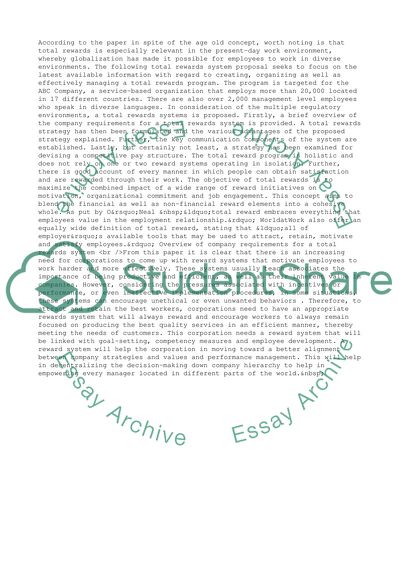Cite this document
(“Total Rewards Programs Research Paper Example | Topics and Well Written Essays - 2000 words”, n.d.)
Retrieved from https://studentshare.org/management/1462039-total-rewards-system-proposal
Retrieved from https://studentshare.org/management/1462039-total-rewards-system-proposal
(Total Rewards Programs Research Paper Example | Topics and Well Written Essays - 2000 Words)
https://studentshare.org/management/1462039-total-rewards-system-proposal.
https://studentshare.org/management/1462039-total-rewards-system-proposal.
“Total Rewards Programs Research Paper Example | Topics and Well Written Essays - 2000 Words”, n.d. https://studentshare.org/management/1462039-total-rewards-system-proposal.


